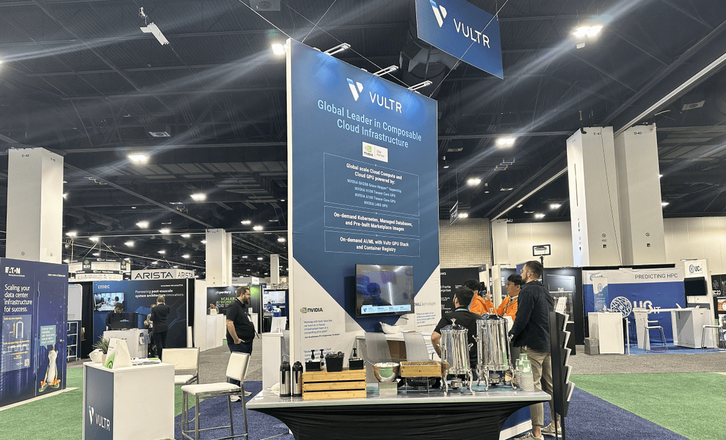Being one of the first public-cloud platforms to guarantee volume access to AMD’s new flagship accelerator when production units start shipping in the third quarter, cloud infrastructure provider Vultr has started its reservation queue for the upcoming Instinct MI355X GPU.
This week’s announcement of the pre-order program puts Vultr in a position to meet demand from developers and businesses who have had difficulty securing capacity due to a worldwide lack of high-performance AI silicon.
The main component of AMD’s fourth-generation CDNA architecture is the MI355X. In order to minimize inter-GPU communication overhead and keep huge transformer models resident in memory, each board has 288 GB of next-generation HBM3E memory and maintains an on-package bandwidth of 8 TB/s. Along with FP8 and FP16, developers may now exchange arithmetic accuracy for significant throughput benefits during both training and inference thanks to support for the new ultra-low-precision FP4 and FP6 data types.
Early-Access Clusters in New Jersey and Amsterdam
AMD is aiming for liquid-cooled racks for the component, recognizing that operators want tighter, more efficient footprints to control power costs and that contemporary accelerators are pushing the thermal boundaries of air-cooled data centers.
Prior-generation Instinct MI300X and MI325X GPUs are already fielded by Vultr, and they are paired with AMD EPYC 7003 and 9004 series CPUs. The new EPYC 4005 ‘Turin’ CPUs and the MI355X will fit into that stack, according to Vultr CEO J.J. Kardwell, providing clients with a single-vendor CPU–GPU route linked via AMD’s Infinity Fabric.
Before expanding the hardware to other locations later in the year, the business intends to launch early-access clusters in its main New Jersey and Amsterdam areas. Although Vultr’s product team has not yet revealed pricing, early adopters will get discounted credits and a guaranteed upgrade route when additional capacity becomes available online.
Independent clouds like Vultr are seen by AMD as an essential distribution channel. Tens of thousands of AI start-ups that are unable to get allocations from the major three platforms are served by smaller regional providers, while hyperscale operators – such as Oracle, who just committed to a 30,000-GPU cluster based on the same silicon – make headlines.
Next-Gen AI Infrastructure
“AMD MI355X GPUs are designed to meet the diverse and complex demands of today’s AI workloads, delivering exceptional value and flexibility,” added Kardwell. “As AI development continues to accelerate, the scalability, security, and efficiency these GPUs deliver are more essential than ever. We are proud to be among the first cloud providers worldwide to offer AMD MI355X GPUs, empowering our customers with next-generation AI infrastructure.”
Although third-party benchmarks have not yet confirmed AMD’s claims, early performance figures from its recent Advancing AI briefing indicate the MI355X offers a 40 percent tokens-per-dollar advantage over NVIDIA’s liquid-cooled Blackwell B200 and a roughly four-fold generational leap in inference throughput. To facilitate the transition for engineers with CUDA training, the accelerator will come with ROCm 6, AMD’s open-source software stack. The latest version includes optimized kernels for PyTorch 2.3, ONNX Runtime integration, and mixed-precision libraries tuned for FP4 and FP6.
Supply shortages are still a wild card, according to analysts. The MI355X depends on state-of-the-art interposers and TSMC’s sophisticated HBM3E packaging capability, both of which are in low supply throughout the industry. Nevertheless, Vultr officials say they are optimistic that they will start generating client cases by the end of September, with “meaningful” scaling coming in the fourth quarter when more wafers are produced.
The Vultr offer is an early test of AMD’s ability to convert semiconductor specs into easily accessible cloud capacity for business purchasers considering alternatives to established Nvidia infrastructure. The launch may be a significant step toward a more competitive and varied AI computing market if the Miami-based company can fulfill its Q3 commitment.

